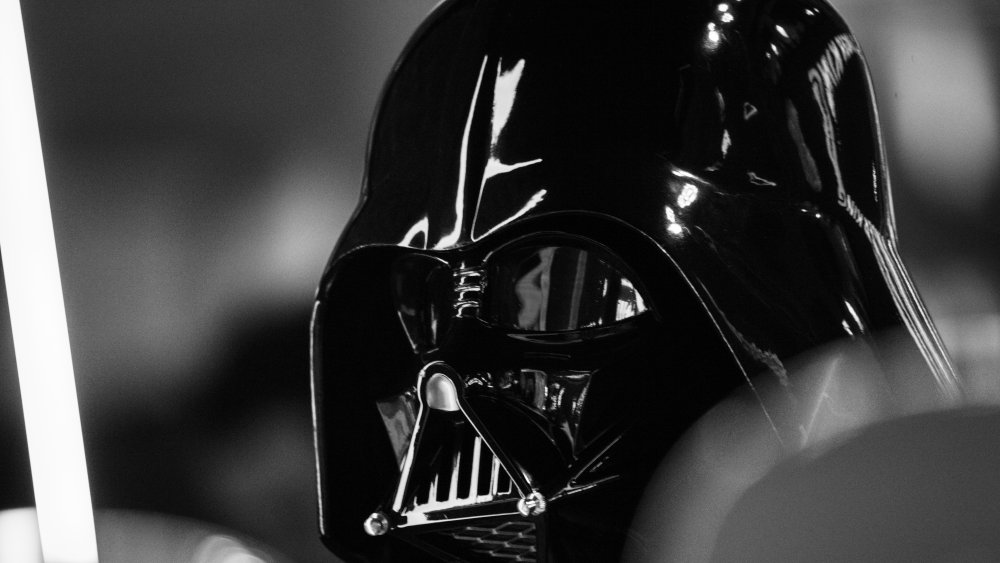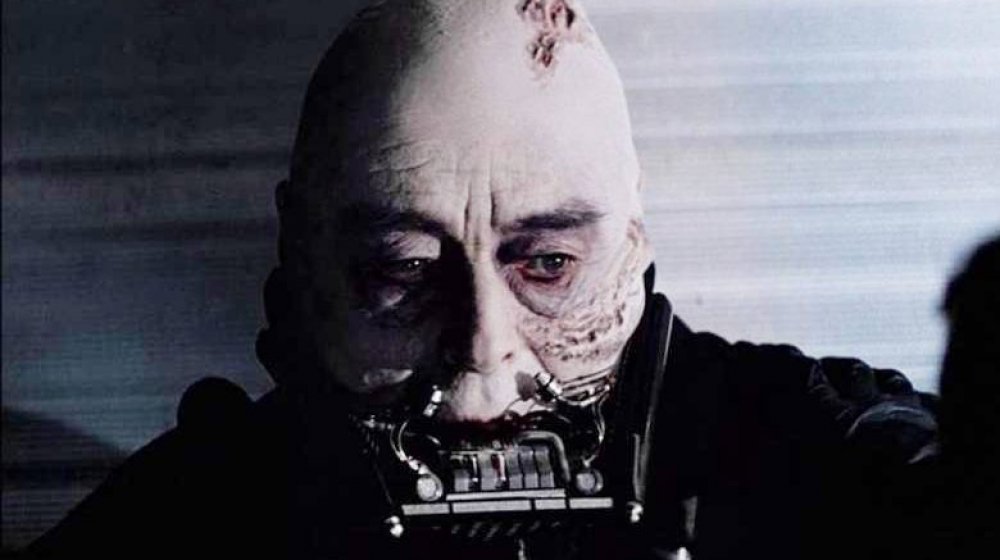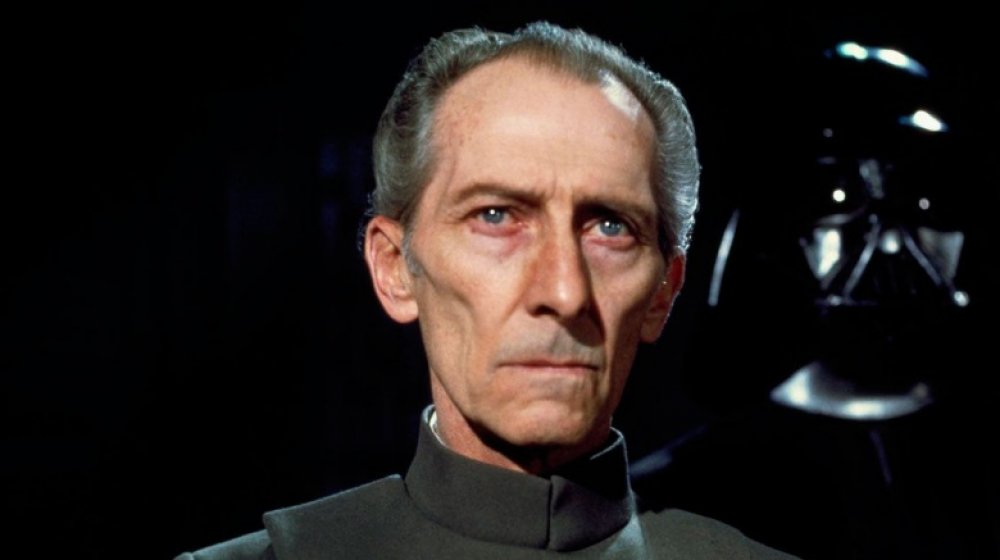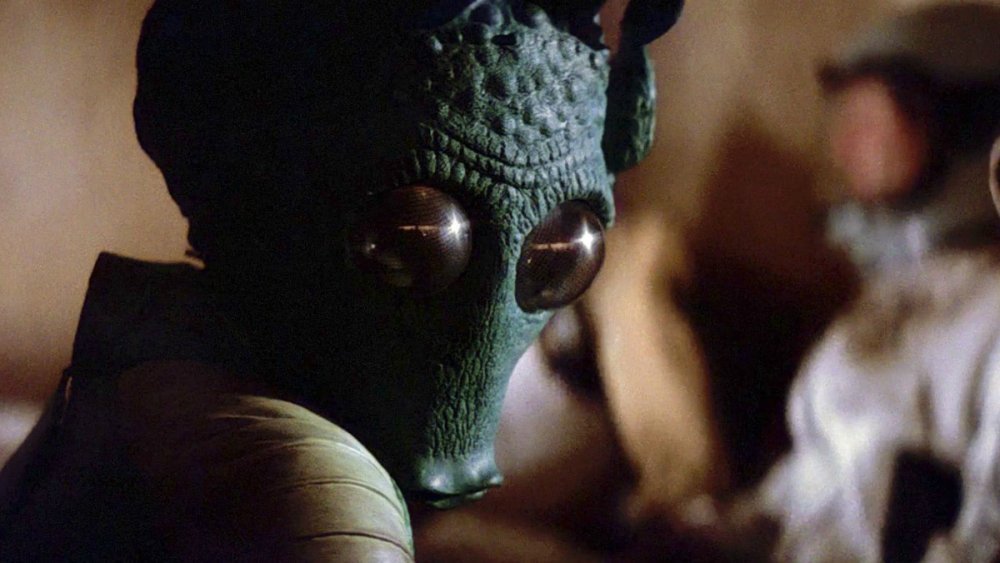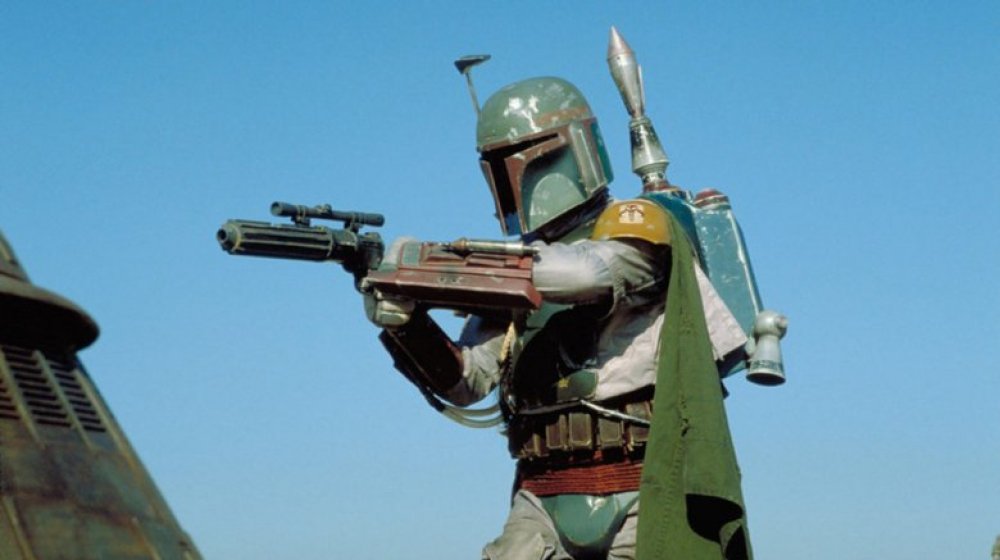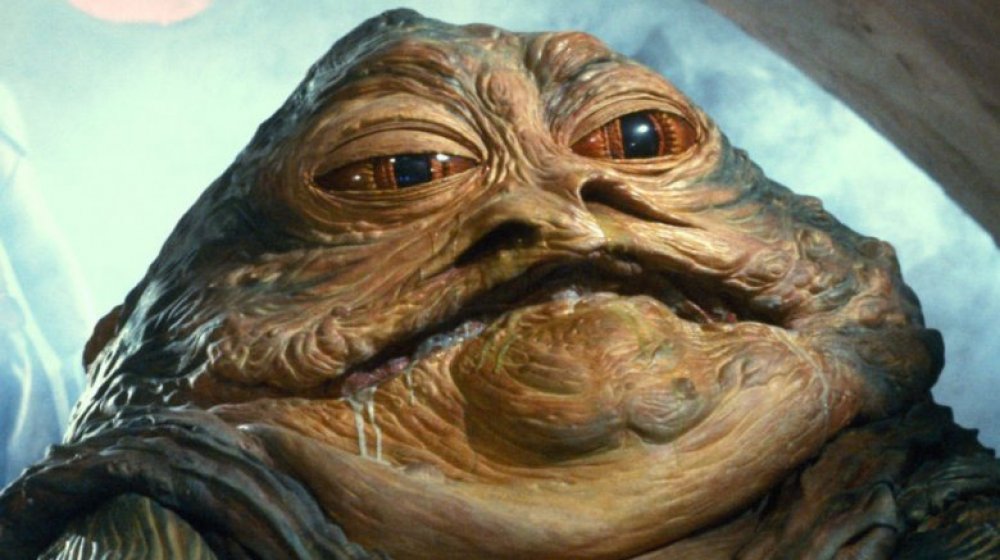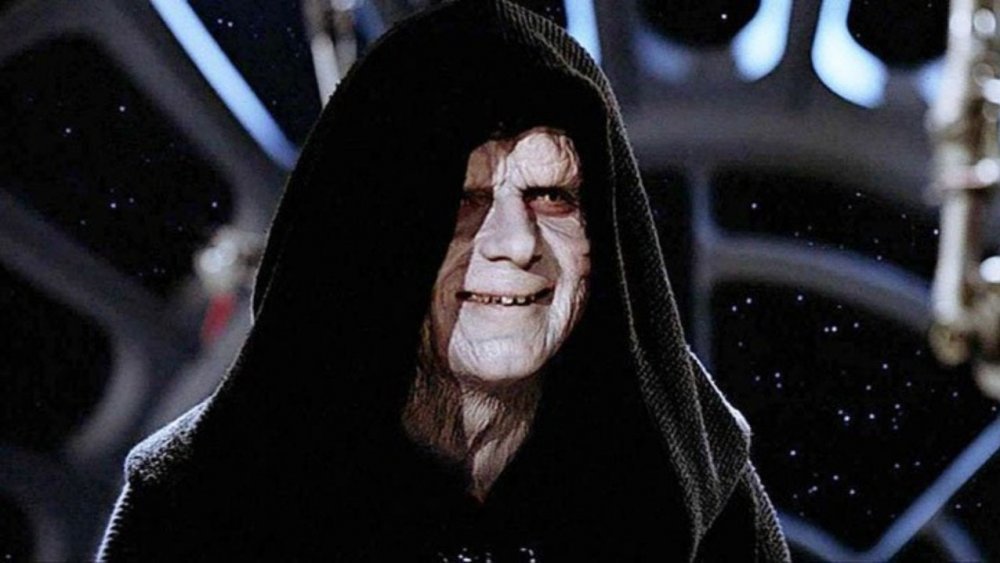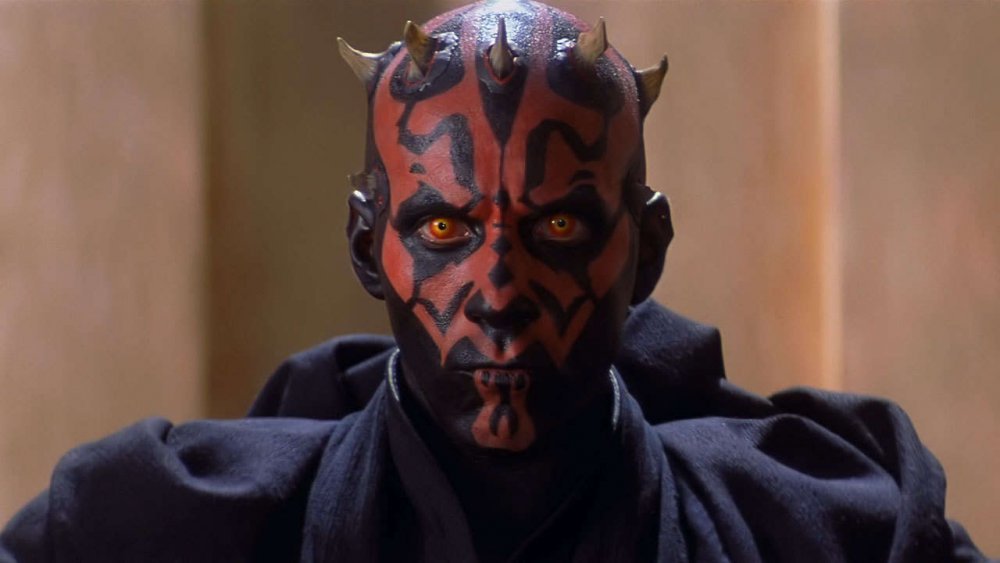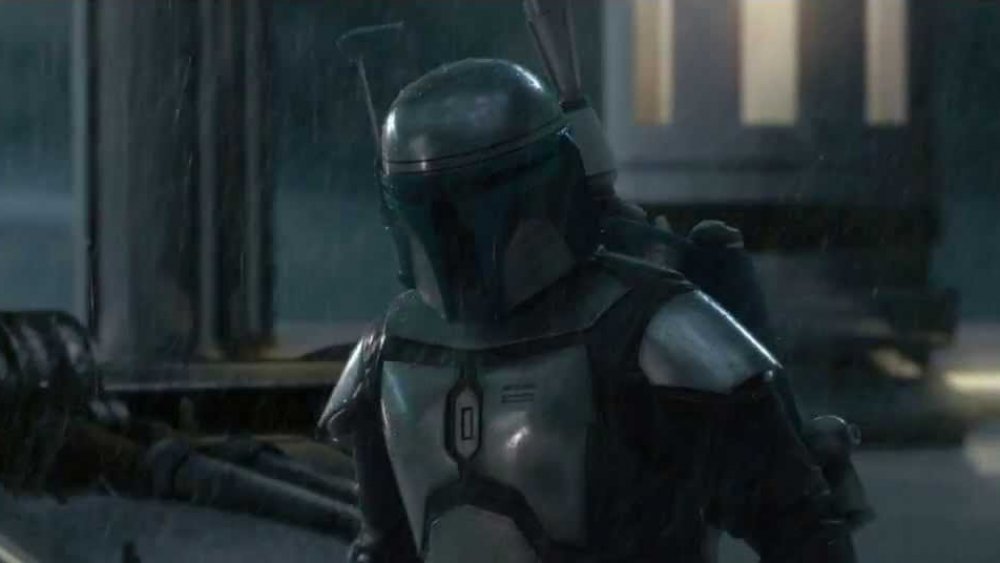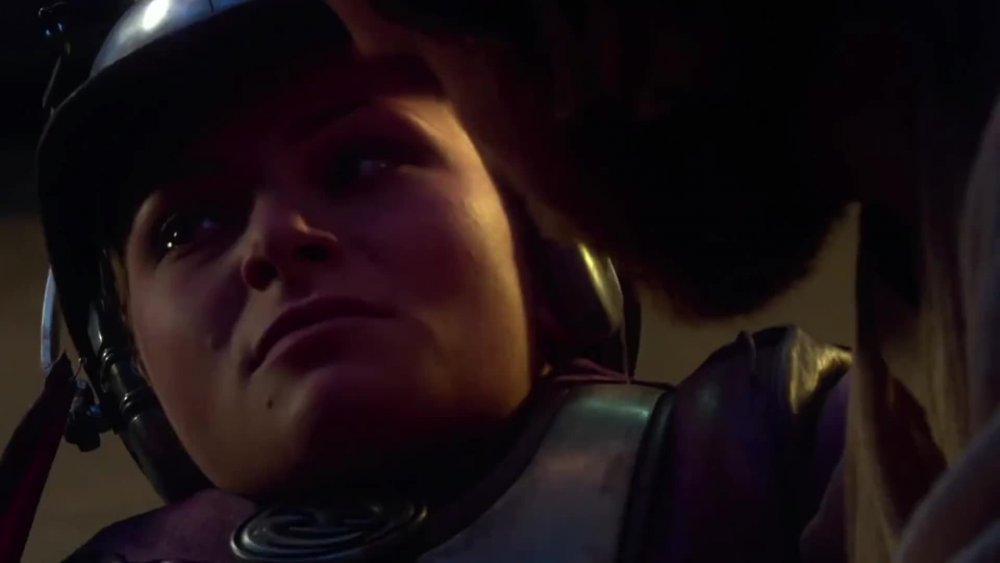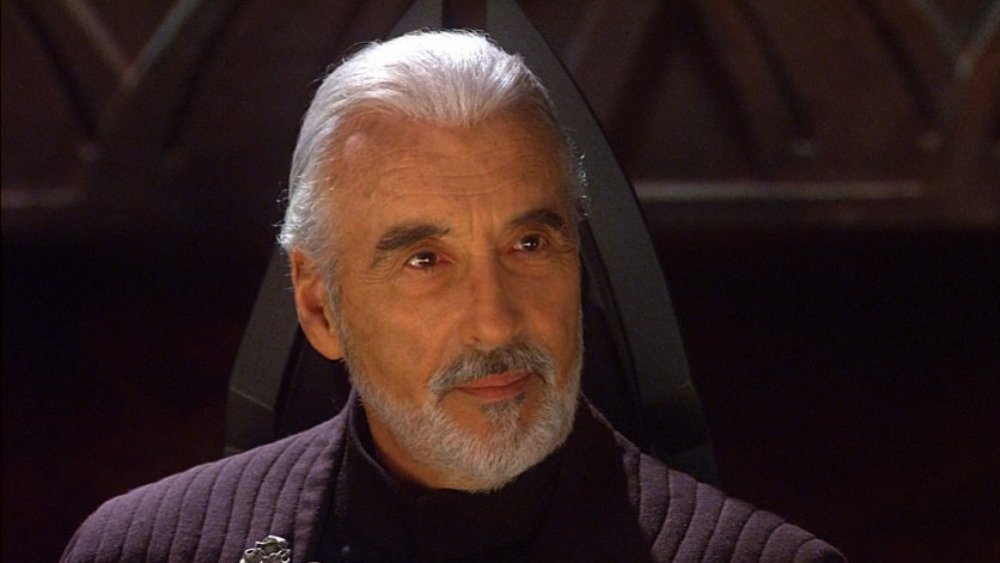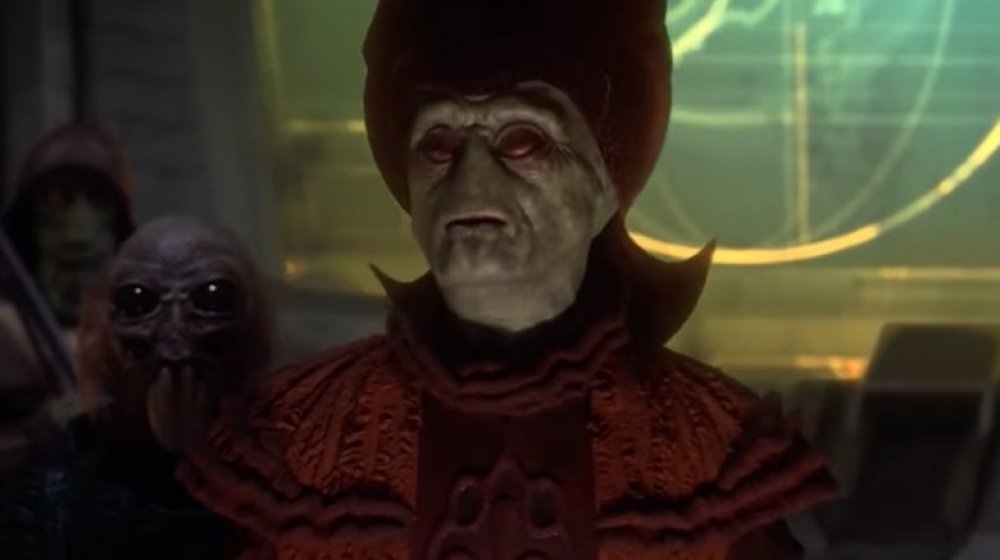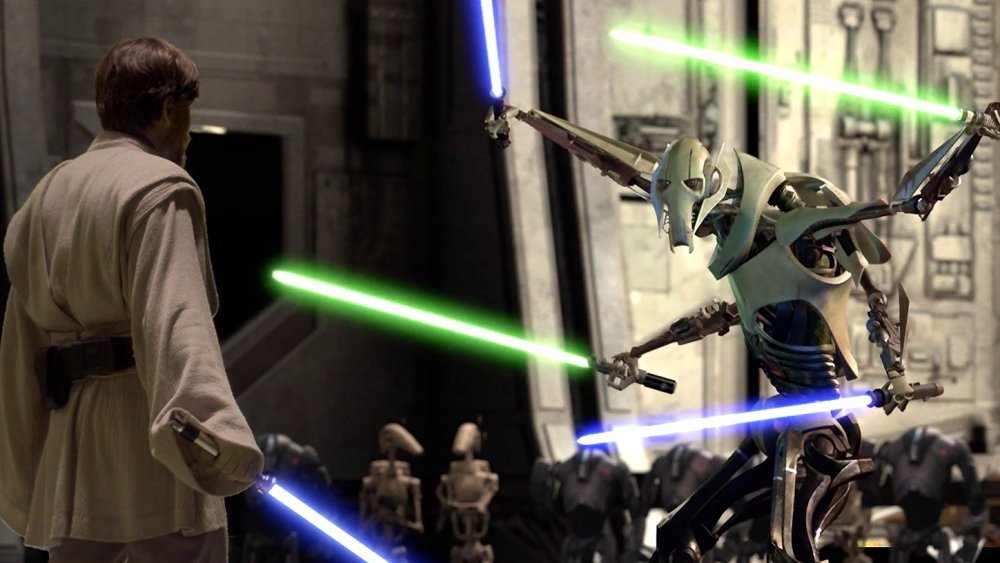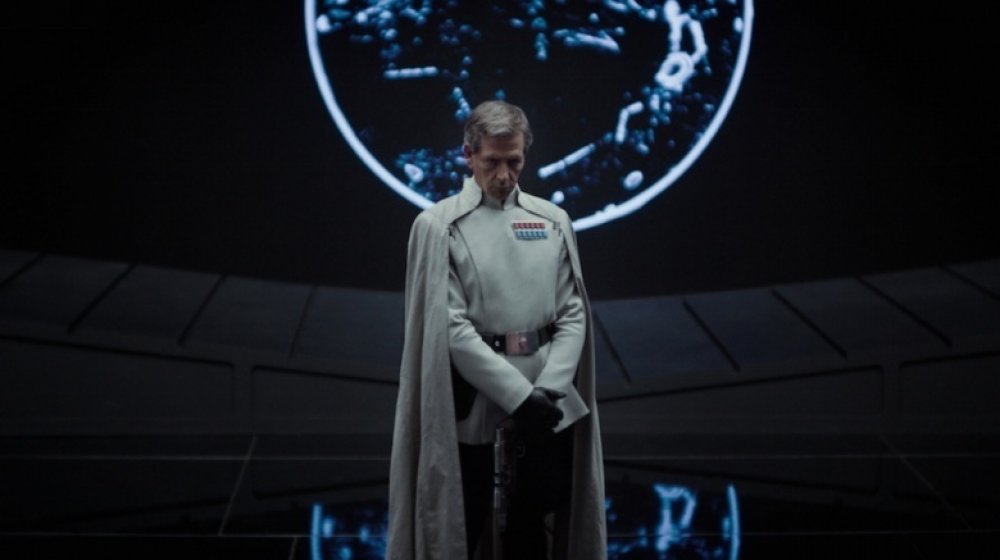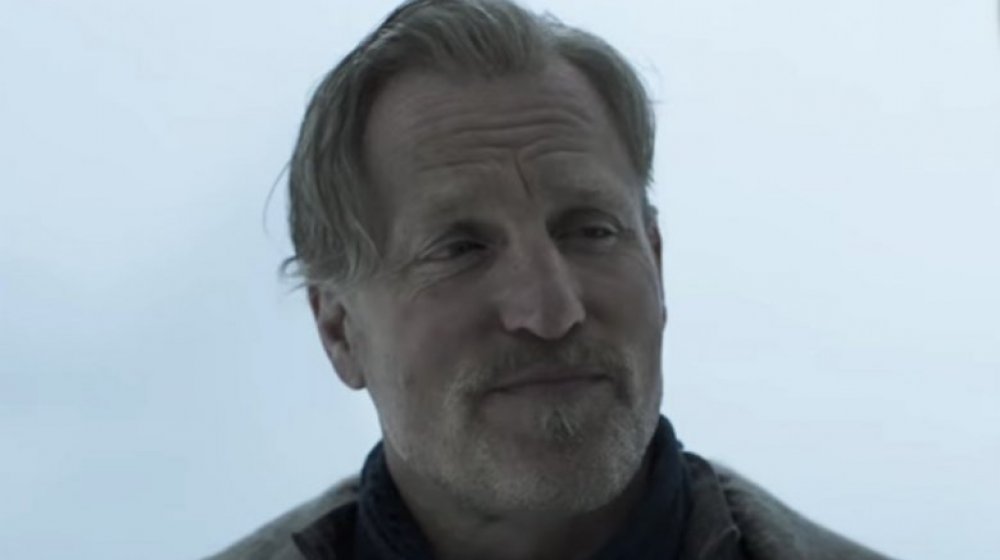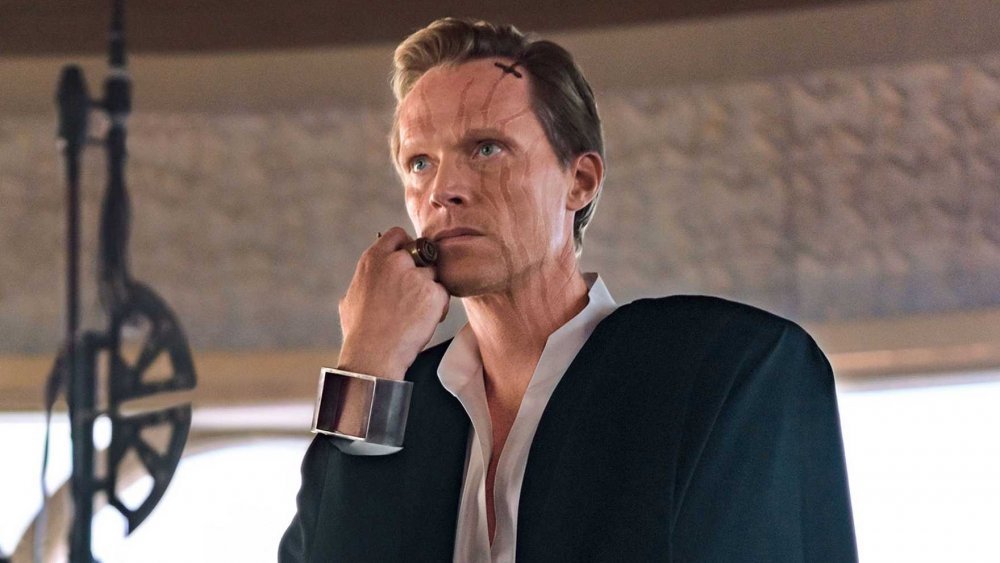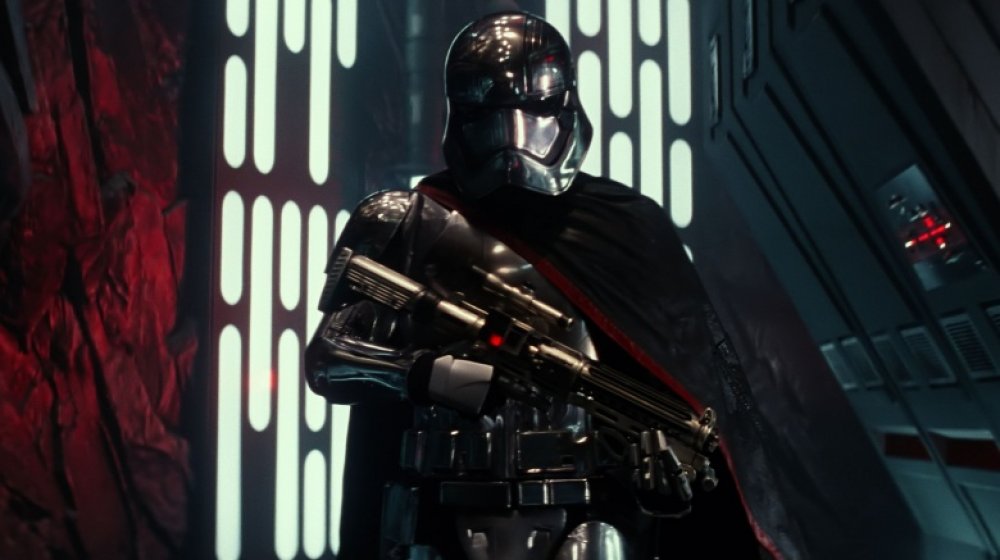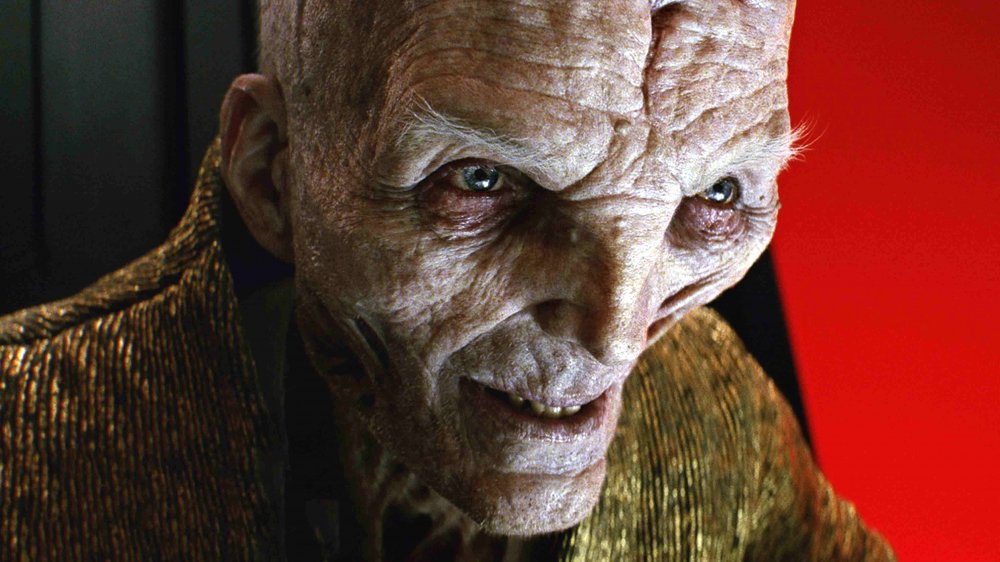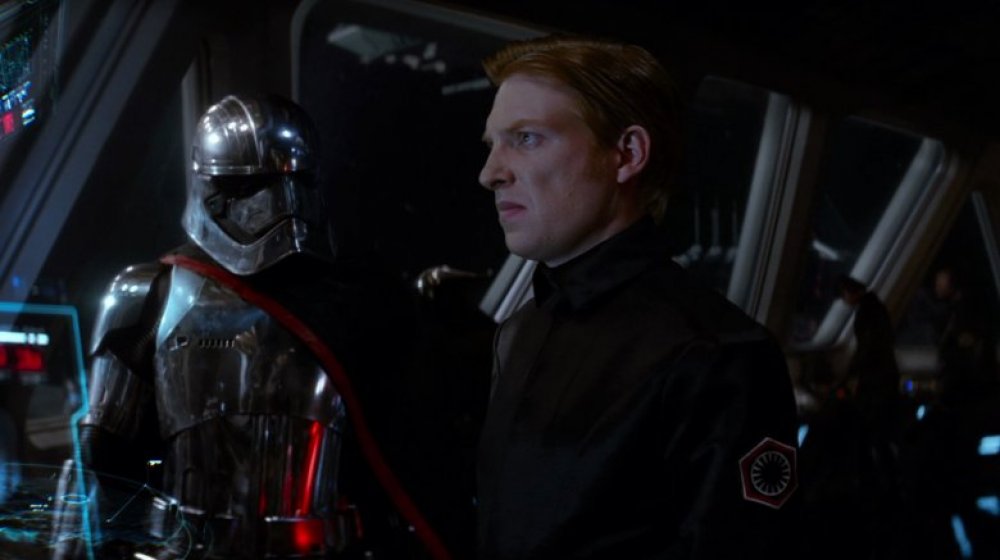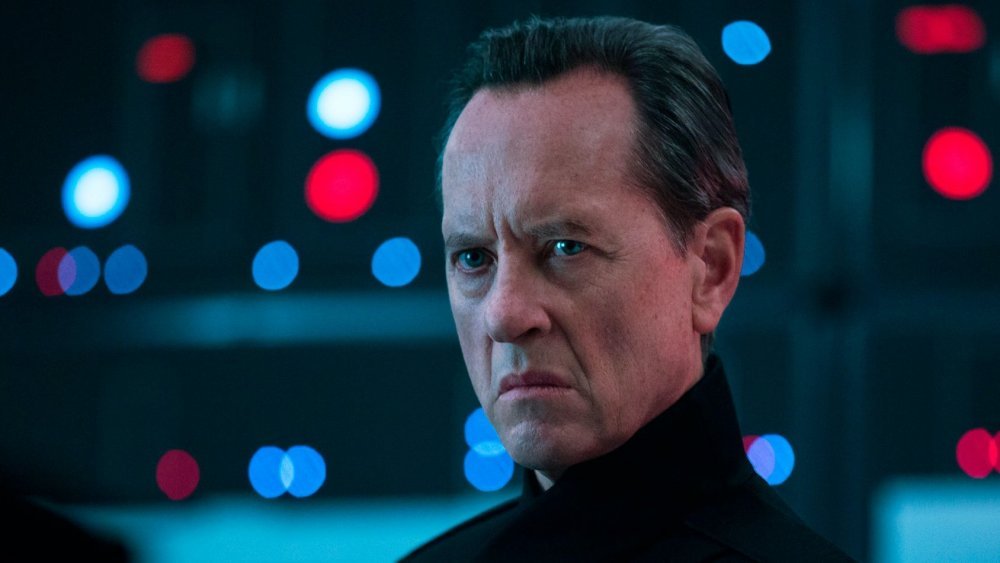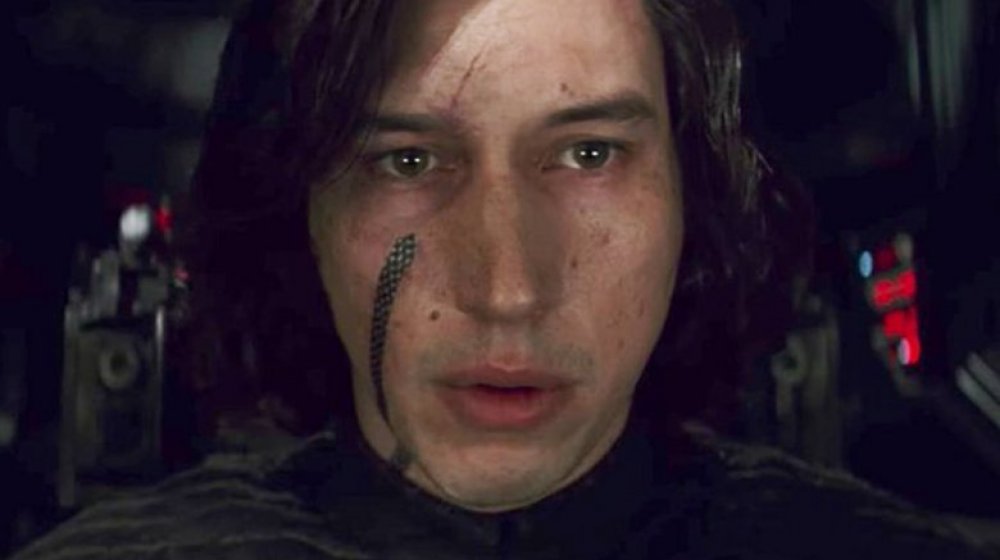The Last Words Of Every Fallen Star Wars Villain
In the simplest of terms, Star Wars is a story about good versus evil. The Jedi versus the Sith. The Light Side versus the Dark Side. And so for every hero that rises to great heights to save the galaxy from the edge of peril, so must a villain fall to their demise, a victim of their own hubris, no match for the intrepid heroes working to stop them from their nefarious plans to corrupt a galaxy far, far away.
But the universe of Star Wars is a wide and varied one, spanning twelve live-action, theatrically released feature films over the course of more than four decades. The franchise contains a panoply of villains, from Sith Lords to sadistic alien gangsters to amoral bounty hunters out to make an imperial buck. For many of these iconic space-age villains, the last words they utter before their demise speaks volumes of their character, their history, and the story they came to tell. So, once more, let the dead speak! These are the last words of every fallen Star Wars villain.
Darth Vader
Can you think of a movie character who has permeated the culture so much that the literal sound of their breathing is iconic? Darth Vader — or Anakin Skywalker, depending on your entry point in the franchise — is as distinctive a villain as any of pop culture's sundry bad guys. From the "Imperial March" that introduces him, to the plot twist heard round the world that defined him, to the prequel films that attempted — in vain — to provide him an origin story, it's hard to top the villainous treachery of Lord Vader himself.
At the climax of Return of the Jedi, after Vader has thrown Emperor Palpatine down a chute to his untimely, fiery demise (temporarily, at least), the Sith Lord has succumbed to the effects of the Emperor's force lightning and is nearing his final breath. Luke carries him out of the Emperor's chamber in an attempt to rescue him, but Vader knows his end is nigh. He asks Luke to remove his helmet so he can look at his son with his own eyes. We are shown the true form of Anakin Skywalker: a sad, frail old man, concealed under a façade of cruelty and evil – also, life-support armor. Anakin is content knowing that he is done for, but Luke insists that he needs to save his father, newly redeemed. Anakin, resolute, responds:
"You already have, Luke. You were right. You were right about me. Tell your sister, you were right."
Anakin, now free from the imposing mask of Darth Vader, has come to terms with the evil he has perpetrated, and has no one but Luke to thank for his redemption from the Dark Side. A noble exit for this icon of Star Wars lore.
Grand Moff Tarkin
If Darth Vader was the vicious, Force-wielding muscle of Star Wars, then Grand Moff Tarkin (brought to life by the inimitable Peter Cushing) was the sly, menacing brains of the Empire's villainous plot in the original 1977 space opera. Before the franchise expanded to include a massive universe of media, one could easily see Tarkin as the primary antagonist of the evil Death Star plot to put the galaxy under the Empire's thumb. Even if Vader's flashier, more aesthetically appealing stylings would become the focal point of the series' villainy, it was Tarkin who kept the trains running on time.
Tarkin is as cruel and nefarious a villain as any in Star Wars lore, leading the mission to use the Death Star as a nightmarish planet-destroying machine of galactic terror. So sure was he of his plans, his final line uttered was a simple, but assured directive to his crew:
"You may fire when ready."
Oh, if only Tarkin knew of that slight design flaw in the Death Star's core, which allowed one lone X-Wing pilot to shoot into that one small exhaust port as easily as bulls-eyeing womp rats from a speeder. When Luke took out the first Death Star, he took out Tarkin with it. Poor monster didn't even see it coming.
Greedo
Perhaps the most famous question to come out of the original Star Wars saga (other than "How bad does a tauntaun smell on the inside?") just might be "Who shot first? Han or Greedo?" If you're a true Star Wars loyalist, you obviously know the right answer, but George Lucas' many revisions to his original filmic text over the years have certainly muddied the waters surrounding this most famous Cantina brawl. Lest we forget the source of the life-ending argument: The Rodian bounty hunter, sent to collect payment from Han Solo on behalf of Jabba the Hutt, isn't taking no for an answer, and is willing to put everything on the line to get his reward.
Han doesn't give up so easily, promising Greedo he has the money, just not on him. Greedo's heard that one before, so he tells Han:
"I've been looking forward to this for a long time."
Han bets he has, and rewards him with a blaster straight to the chest, ending the cat-and-mouse chase once and for all. A sad last line for a sad bounty hunter, made even more sad by Lucas' latest edit, providing Greedo with one more odd alien utterance: "Maclunkey," a Hutt word that loosely translates to "This will be the end of you." Maybe we can edit that one out in the next cut, eh George?
Boba Fett
Did any character rise to prominence as quickly as the tight-lipped bounty hunter Boba Fett? The future inspiration for Disney+'s celebrated series The Mandalorian, this jetpack-donning silent hunter quickly became a fan favorite after his first, brief appearance in The Empire Strikes Back. Fans love a good mystery, and there's nothing more mysterious than a near-silent masked figure who stands opposed to everything good and right in the galaxy.
While Boba remains a silent, brooding bounty hunter for most of Return of the Jedi, one of the only lines he does have clearly defines this character within the world of the Star Wars universe:
"He's no good to me dead."
This guy's work-life balance is seriously out of whack. Boba Fett, a character who quickly became a popular staple of Star Wars fandom, is nothing if not committed to his artistry as a bounty hunter — even if he finds himself on the wrong side of a Sarlacc Pit meeting an all-too untimely demise.
Jabba the Hutt
In all of the Star Wars universe's array of colorful characters, no one might be more aesthetically displeasing than the grotesque, slug-like gangster Jabba the Hutt. One of the most feared crime lords in the galaxy, Jabba makes his first appearance in Return of the Jedi, though Lucas would later edit him back into A New Hope in far less imposing form. Set in his lush palace among an array of equally freakish alien criminals is the way we prefer to remember him.
Sadly — for us — Jabba doesn't get a noble send-off line before his demise; he simply orders those beneath him to throw Luke Skywalker into the dreaded Sarlacc Pit:
"Put him in."
It isn't long after he gargles that out in his native Hutt-speak that he's brought down by the captive Princess Leia, who weaponizes the chains of her own captivity to strangle her disgusting jailer. Ultimately, a less-than-noble death for a far-less-than-noble alien mob boss.
Emperor Palpatine
A deadly Sith force for evil with a flair for the dramatic, Emperor Palpatine's journey from "creepy villain who pops up at the end of Return of the Jedi" to "the ultimate binding character of the entire Star Wars film saga" crept up on the culture pretty quickly, which seems pretty on-brand for a deadly former senator turned lightning-throwing space wizard.
It would've been all well and good for the Emperor to remain dead after being cast into oblivion by Darth Vader, but Disney just couldn't leave well enough alone. His final lines uttered while torturing Luke with force lightning would have been pretty apt too:
"You have paid the price for your lack of vision. Now young Skywalker, you will die."
Of course, those no longer qualify as Palpatine's final words. Thanks to the dark power of the Sith, Palpatine rose from the grave to lead Kylo Ren (Adam Driver) into a new reign of terror — and to reunite with his inexplicable granddaughter, Rey (Daisy Ridley).
In his final showdown with the hero of the sequel trilogy, it seems as if Palpatine has Rey on the ropes. In his final attempt to consume her and take her youthful power, he tells her:
"You are nothing. A scavenger girl is no match for the power in me. I am all the Sith."
Fortunately for the galaxy, Rey is able to summon the power of all of the Jedi and use it to finally (actually!) defeat Palpatine once and for all, vanquishing this seemingly eternal force of evil from the Star Wars universe for good (we hope).
Darth Maul
If any good did come from The Phantom Menace and the prequel trilogy, it was the fantastically designed new characters and creatures, including Darth Maul (Ray Park), the big baddie of the first prequel entry. His distinctive red and black makeup, devil horns, and double-sided lightsaber paired with a richly scored, overly choreographed lightsaber duel to end the film cemented Maul as one of the more memorable characters of the prequels.
While Maul is typically known as a silent character, he actually does have a few brief moments of dialogue in the middle of the film (voiced by future The Tick star Peter Serafinowicz). He speaks primarily in conversation with his master, Darth Sidious. Maul speaks his truth to his master:
"At last we will have our revenge."
This, sadly, wouldn't be true for Maul, as he would meet his end after being cut in half by Obi-Wan in battle. He does take after his master, however, as a later cameo in Solo – and a slew of appearances in the canonical animated series — show that Maul improbably survived his defeat, carrying on his villainous ways even after a pretty definitive transecting wound. The power of the Force!
Jango Fett
In its seemingly endless quest to explain every single facet of classic Star Wars lore, the prequel trilogy, of course, had to answer the question burning in everyone's mind: "Hey, where did Boba Fett come from?" Sadly, the answer appears to be that Boba Fett is a clone. Sigh.
In the grand plot to create an army of clones for the Republic, Jango Fett (Temuera Morrison) was selected to serve as the model from which all Clones would be created. As part of his payment, Jango received one unaltered clone that he could raise as his son (the bounty hunter who's better than all the rest, Boba Fett). On his way to take his revenge on the Jedi, Jango utters an all-too-eerie line of dialogue to the young Boba:
"Then we'll have a couple of surprises for him."
Unfortunately, the Jedi had a few more surprises for Jango. Upon entering combat, Jango loses his head to the purple blade of Master Windu (Samuel L. Jackson) after his final line: "Don't move, Jedi. Take them away." Is it any wonder Boba goes on to work for the Empire? Yet another villain defeated by his own hubris.
Zam Wesell
In the elaborate game of "pass the parcel" that is the plot to kill Senator Amidala in the first act of Attack of the Clones, Senator Palpatine hires Count Dooku, who hires Jango Fett, who hires shapeshifter Zam Wesell (Leeana Walsman), who programs a robot to send two deadly wormlike creatures to kill Padme. Even with all this twisting and turning to off the former queen, the plan is stopped dead in its tracks by young Padawan Anakin Skywalker (Hayden Christensen) and his master, Obi-Wan (Ewan McGregor).
After an exceedingly long and elaborate chase atop speeders, across skies, and through seedy nightclubs, they eventually track Wesell down and interrogate her. She's is only able to muster up "It was a bounty hunter called ..."
Jango Fett puts a quick end to the shapeshifter before she can divulge any sensitive intel — but not before she uses her final words to call him a "Bounty hunter slimeball." Not much of an exit for yet another pawn of the Empire's deep and mysterious plans.
Count Dooku
Before his passing, it was well established that if you wanted your sci-fi or fantasy film to reach epic heights, you hired Sir Christopher Lee to play your villain. The storied English actor's credits include the Count Dracula and Saruman from Peter Jackson's Lord of the Rings – you don't get much more iconic than that.
Lee brought his sinister booming voice and towering presence to the Star Wars prequels in the underutilized role of Count Dooku, yet another evil apprentice to Palpatine.
Dooku proves a worthy enough foe, cutting off Anakin's hand and holding his own against Master Yoda in Attack of the Clones' most exciting lightsaber fight, but it's in the concluding chapter of the prequel trilogy, Revenge of the Sith, that Dooku must finally meets his maker. In his final face-off against a newly revitalized Anakin, Dooku, wielding his lightsaber as confidently as ever, utters to Anakin:
"I sense great fear in you, Skywalker. You have hate, you have anger, but you don't use them."
A slight mirroring of an earlier phrase of Yoda's, sensing the emotional weakness that can lead someone down the path from the Light Side to the Dark Side. Dooku knows more than he realizes, as Anakin does let his anger and hate overcome him, resulting in the gruesome beheading of Dooku, an act that certainly contributes to Anakin's transformation into the evil Lord Vader.
Nute Gunray
Oh, to wish for a world where we didn't have to talk about Nute Gunray, the Neimodian Viceroy of the Trade Federation — the villain who got this whole prequel saga rolling. Alongside his casually racist voice and his completely off-putting design, Nute had the gall to go to war with the planet of Naboo, and become part of the Separatist Movement that continued the escalation of Palpatine's plan for galactic domination. Not exactly the menacing evil-doer in the Star Wars canon, but easily one of the most irksome.
Which is why, in Revenge of the Sith, you can't say it's too upsetting when he gets slaughtered at the lightsaber of the newly anointed Darth Vader alongside his fellow Separatists. Just before his death, he tries to plead with Vader:
"The war is over! Lord Sidious promised us peace! We only want..."
Not good enough, Nute. He's cut off mid-sentence by Anakin's wrath. It's fair to say that among the many, many inhabitants of the Star Wars Universe, Nute Gunray is about as likely to be resurrected as Jar Jar Binks.
General Grievous
Among the onslaught of new characters thrown into the mix in the prequel trilogy was General Grievous, a secondary antagonist introduced and quickly defeated in Revenge of the Sith (he plays a bigger part in the animated series, but that is neither here nor there, since he dies in the movie). Grievous was responsible for the kidnapping of Senator Palpatine that kicks off the film, and he serves as a catalyst for one of the more exciting action sequences in the film: a multi-lightsaber-wielding duel against Obi-Wan Kenobi. At first, it seems like the odds are in Grievous' favor — the guy has four arms and four laser swords, after all. Grievous, like many of the villains on the list, remains cocky and confident, telling Obi-Wan:
"Army or not, you must realize, you are doomed."
Evidently not, it seems! Quickly after this, Obi-Wan is successful in grabbing Grievous' blaster and absolutely demolishing the squishy alien remnants that lie beyond Grievous' hideous robot exoskeleton. Even the most confident and badass villains just can't hold their own against the Jedi, it seems.
Orson Krennic
In its wartime retelling of the events leading up to Episode IV: A New Hope, Rogue One chronicles the completion of the first Death Star by the Empire, and the Rebel plan to steal its schematics in an attempt to destroy it. The mastermind behind the Empire's plans is Orson Krennic, realized on screen by the incomparable Ben Mendelsohn. As Director of the Imperial Military Department, Krennic is the chief antagonist working against the "Rebel Scum" who dare try and pull off such a courageous mission.
The final confrontation between Krennic and our hero, Jyn Erso (Felicity Jones), is an especially tense one, with Krennic holding his blaster aimed squarely at Jyn with no hope for our lead protagonist in sight. As ever, Krennic boldly declares his victory — not only for himself — but for the Empire at large:
"The shield is up. Your signal will never reach the rebel base. All your ships in the air will be destroyed. I lose nothing but time. You, on the other hand, die with the rebellion."
As if by fate, at that very instant, he is struck by the blaster of Cassian Andor (Diego Luna), and immediately falls dead in his tracks. You'd think these Star Wars villains would learn to dial down the hubris by now, but they never will, it seems.
Tobias Beckett
In a story focusing on a scoundrel, it's best to surround yourself with a legion of them. So it goes in Solo: A Star Wars Story, an anthology film that chronicles the rise of a young Han Solo (Alden Ehrenreich) as he gains a lifelong friend in Chewbacca, meets his on-again off-again frenemy Lando Calrissian, and flies the Millenium Falcon with such gusto.
The life of a scoundrel like Solo attracts nefarious characters like Tobias Beckett (Woody Harrelson), a character that Han almost thinks of as a mentor — until he betrays him at the worst possible moment in their mission. We learn that Beckett has been working with the film's Big Bad — Dryden Vos (Paul Bettany, further down this list) — the whole time, and his ultimate betrayal should have been a foregone conclusion.
Ultimately, Han and Beckett end up in a blaster stand-off, and in traditional Star Wars-villain fashion, Beckett goes off monologuing, providing Han the opportunity to plant a perfect kill shot. Just before he goes, Beckett imparts his final words on the young space bandit:
"You made the smart move kid, for once. I woulda killed you. I really was gonna learn to play that valachord."
This references his earlier dreams of retirement from the life of looting and thieving, dreams that will have to go to his grave with him. Beckett did teach Han an important lesson, though: Be careful who you trust in this galaxy.
Dryden Vos
In Solo, the Sith, the Jedi, and all the other big political bads all but sit on the bench so we can explore the Star Wars underworld. Our main evil organization is the crime syndicate Crimson Dawn led by the villainous Dryden Vos (Paul Bettany in his scheme to star in every Disney-owned franchise). Vos only shows up a few times throughout the film, but it's ultimately revealed that he and his partners in crime are planning to use the stolen coaxium from Han's mission to support the growing reach of the evil Empire. Even a scoundrel like Han Solo will not let that stand.
But Vos is not alone in his plans, for he's being assisted by the woman of Han's affections, Qi'ra (Emilia Clarke), whether Han realizes it or not. In fact, just before Vos' ultimate demise, he tries to impart this to Han:
"Han, she's done things that you could never understand, but I do. I understand her completely. Once you're a part of Crimson Dawn, you can't leave."
It's not long after this that Vos is stabbed right in the stomach by Qi'ra, making her the new boss in town. The world of crime in Star Wars remains an ever-revolving door of characters sucked in by the allure of power and wealth.
Captain Phasma
Finn's journey from timid stormtrooper to courageous rebel places him squarely opposite his former boss: Captain Phasma (Gwendoline Christie), the chrome-clad leader of Finn's erstwhile troop. Phasma is a notable, deadly opponent — the perfect physical embodiment of everything Finn despises about the stormtroopers and the First Order. She's a heartless villain who will carry out deadly tasks with relish.
In The Last Jedi, Finn gets the chance to face off against Phasma one-on-one, just as the ship they're on is collapsing after being struck by Admiral Holdo's (Laura Dern) attack. Just as Phasma thinks she has the upper hand, Finn strikes a deadly blow. Phasma remains defiant at the end, telling Finn:
"You were always scum."
To which Finn triumphantly responds, "Rebel scum," just before sending Phasma to her doom.
Supreme Leader Snoke
Every Star Wars trilogy needs a demonic villain sitting on a throne, pulling the strings of the other villains, preferably with the Force. In the sequel trilogy, we get the vile Supreme Leader Snoke, brought to horrifying life by the master of motion capture himself, Andy Serkis. Before Rise of Skywalker revealed Snoke's odd history as a clone created by the Emperor (a premise that's as sweaty as it sounds), he's just another in a long line of puppet masters working their mischief and chaos on unsuspecting Dark Side-abiding champions of the Force.
With his claws sufficiently sunk into Kylo Ren, it seems all but assured that he'll take over Rey's mind in no time. In response to Rey's efforts to turn Ren, he says:
"You think you can turn him? Pathetic child. I cannot be betrayed. I cannot be beaten. I see his mind. I see his every intent. Yes. I see him turning the lightsaber to strike true. And now, foolish child, he ignites it, and kills his true enemy."
Hate to break it to ya, Snoke, but it turns out Kylo's actual "true enemy" is ... well, it's you. Kylo does indeed ignite his lightsaber, cutting Snoke in half in the process. With this act, Kylo finally becomes the true villain without a master ... at least until he's controlled by the Emperor in the next film. Old habits die hard.
General Hux
In the occasionally subtle mirroring deployed by the sequel trilogy, this series' iteration of Grand Moff Tarkin shows up as the similarly scheming General Hux, played to anger-inducing perfection by Domhnall Gleeson. Similar to Tarkin's relationship with Vader, Hux also seems to find himself playing second fiddle to the Force-y machinations of Kylo Ren. He struggles to balance his tactical, rhetorically flamboyant approach to galactic fascism with Ren's ... less organized approach.
Hux meets his end at the hands of fellow First Order General Pryde (Richard E. Grant), blasted for acting as a mole within the First Order and attempting to bring down Kylo Ren. Technically his last line is:
"They overpowered the guards and forced me to take them to their ship."
At which point he is blasted to oblivion for his treason. Earlier on, when asked why he is betraying the First Order, he gives an answer that provides genuine insight into his character:
"I don't care if you win. I need Kylo Ren to lose."
It just goes to show that within the First Order, the desire for power and vengeance will overtake all else.
General Pryde
The Rise of Skywalker wouldn't be a Star Wars movie if it didn't introduce yet another villain in the final installment to add an additional layer of menace to the closing proceedings. Thus Richard E. Grant entered the picture playing General Pryde, a former member of the Empire, now serving in the ranks of the First Order.
One of his more notable lines might have served as an appropriate valediction. He professes his allegiance to the reincarnated Emperor Palpatine, pledging:
"As I served you in the old wars, I serve you now."
Yes, Pryde was one of many officers serving as part of the Empire back in the original trilogy, and his reign of evil domination has carried over to an entirely new fascistic faction. One could say he's nothing if not determined to constantly serve the most evil forces in the galaxy, but such devotion does prove to be his undoing in the end. His fate is reflected in his final line: "Where did they get all these fighter craft? They have no navy."
Kylo Ren
When all is said and done, perhaps the best new character introduced in the sequel trilogy is the twisted anti-hero Ben Solo, a.k.a. Kylo Ren. Son of Leia Organa and Han Solo, Ren sees a way to gain power through the Force outside of the confines of the Jedi-Sith binary. His idolatry of his grandfather, Darth Vader, proves to be to his downfall as he follows him down the path of redemption after it's already too late. His journey is one of deep complexity, both in the way he reckons his own place in the universe with what it means to harness the Force as a Skywalker.
His final lines arrive earlier than his death, in a confrontation with his mind's version of his deceased father, Han. Ren admits to the specter of Han:
"I know what i have to do, but I don't know if i have the strength to do it."
We never get to hear Ren's true final words, whispered to Rey — the last thing we hear him say, rather hilariously, is "Ow" — but the novelization of the movie reveals that he told her, "I will always be with you."
